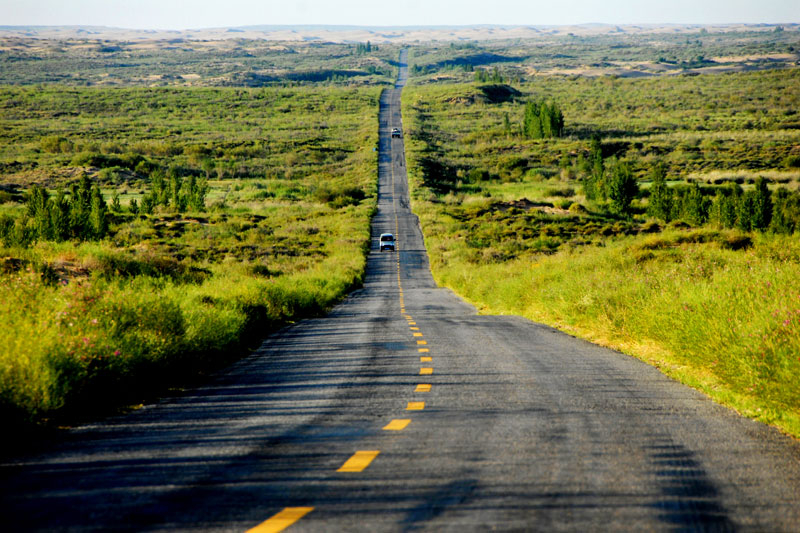China's seventh largest desert turns green

A car drives along a highway, with lush vegetation on both sides, in the once-barren Kubuqi Desert. [Photo/people.cn]
The Kubuqi Desert, the seventh largest in China, has witnessed remarkable progress in its environmental and ecological restoration in recent years.
The once-barren land -- which covers 18,600 square kilometers -- is located in the Ordos Plateau in North China’s Inner Mongolia autonomous region.
Statistics reveal that more than 6,000 square kilometers of the Kubuqi Desert have been reclaimed over the past 30 years.
The vegetation coverage rate of the Kubuqi Desert has increased from 3 percent to 53 percent, an extraordinary achievement in increasing its green coverage and shrinking the land covered by sand.
Comparing the situation in 1988 with that in 2018, the number of sandstorms caused by the desert has been reduced from 50 per year to one, and biodiversity has recovered from 123 to 530.
Meanwhile, 384 kilometers of highways have been constructed in the desert and wherever the highways extend, environmental restoration projects are conducted.
Officials said that the desert is turning into an oasis after three decades of the coordinated efforts by local government and enterprises, with the invaluable participation of farmers and herdsmen in desertification control.
The Kubuqi Desert was once the source of frequent sandstorms that also afflicted China’s capital city Beijing, 800 kilometers away. In severe cases, it caused the input of 160 million metric tons of sediment into the Yellow River every year.



 Print
Print Mail
Mail


